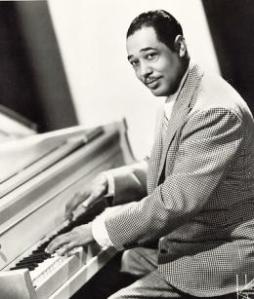Introduction to the Creation of Jazz and Blues
While it was considered provocative at the time, jazz has created its own genre in music history. During the 1920s, jazz was unlike anything people heard before. The sound was filled with shortened rhythms and improvised and instrumental solos.
Jazz first came on the American scene in 1890 and continued forming between that time and 1920. It originated in New Orleans but migrated North during the 20s. It increased in notoriety and popularity during its migration (Peretti, 22-39).
Though African Americans faced a lot of prejudice before the 1920s and after the decade, they were still viewed by many as talented individuals who made a contribution to music in society.
Migration Statistics
Southern Black musicians began moving North between 1917 and 1930, approximately 72.2% made this move (Peretti, 44).
Of the musicians who moved North, 75% of them intended to settle in New York City or Chicago (Peretti, 44).
Controversy
Despite the popularity of jazz music, it was not nationally welcomed. Jazz during the Harlem Renaissance was considered “Devil’s Music” to some. Its liberating and sensuous beats was often considered inappropriate and often censored.
Blues was also considered a sort of artistic expression of angst and despair with the dominant white society at the time (PBS).
Artists
“Duke Ellington’s involvement with the Harlem Renaissance was peripheral: Ellington was not equipped to enter into intellectual discussions” (Collier, 43).
In 1927, Duke Ellington began creating and forming the career he so desired. In 1927, he got his own band (The Washingtonians) that played his own music. He first discovered success with songwriting and composing, as it made more money easily.
Ellington discusses his career beginnings by saying, “during my first few months in New York, I found out that anybody was eligible to take songs into the music publishers on Broadway” (49).
The multi-talented and charismatic Ellington and the Washingtonians took over the Harlem Renaissance scene after broadcasting regularly in 1927.
Annotated Bibliography
Carter, Maria. “The Devil’s Music: 1920s Jazz.” PBS. PBS, n.d. Web. 02 Dec. 2014. <http://www.pbs.org/wgbh/cultureshock/beyond/jazz.html>.
This source gives good information on how Jazz was perceived during the 1920s.
Collier, James Lincoln. Duke Ellington. New York: Oxford UP, 1987. Print.
James Collier gives detailed factual information on the life and times of musician and composer, Duke Ellington. Ellington made various pop culture contributions to jazz and the Harlem Renaissance.
Peretti, Burton W. The Creation of Jazz: Music, Race, and Culture in Urban America. Urbana: U of Illinois, 1992. Print.
Burton Peretti gives good geographical information on the spread of jazz music during the 1920s.
“Movies, Music, and Sports of the 1920’s.” Movies, Music, and Sports of the 1920’s. N.p., n.d. Web. 02 Dec. 2014. <http://www.albany.edu/faculty/jjpowers/risp361/projects/F_Viau_Jim/moviesmusicsports.htm>.
The website belonging to University of Albany gives gives good information on everyday life and pop culture during the 1920s.
“The Harlem Renaissance.” Ushistory.org. Independence Hall Association, n.d. Web. 02 Dec. 2014. <http://www.ushistory.org/us/46e.asp>.
This website gave me insight to the 1920s through broad information discussing society and music.
“Patell and Waterman’s History of New York.” Patell and Watermans History of New York. N.p., n.d. Web. 03 Dec. 2014. <http://ahistoryofnewyork.com/2012/02/networked-new-york-annotated-program-part-2/>.
This gave me a genuine image of 1920s Harlem.

